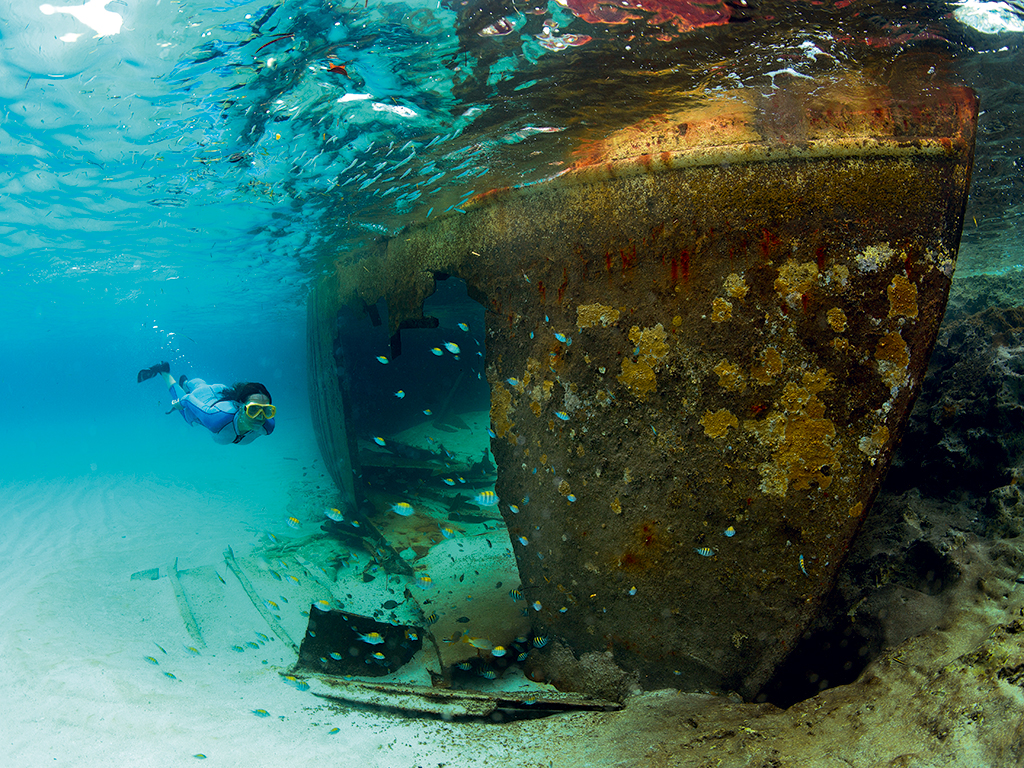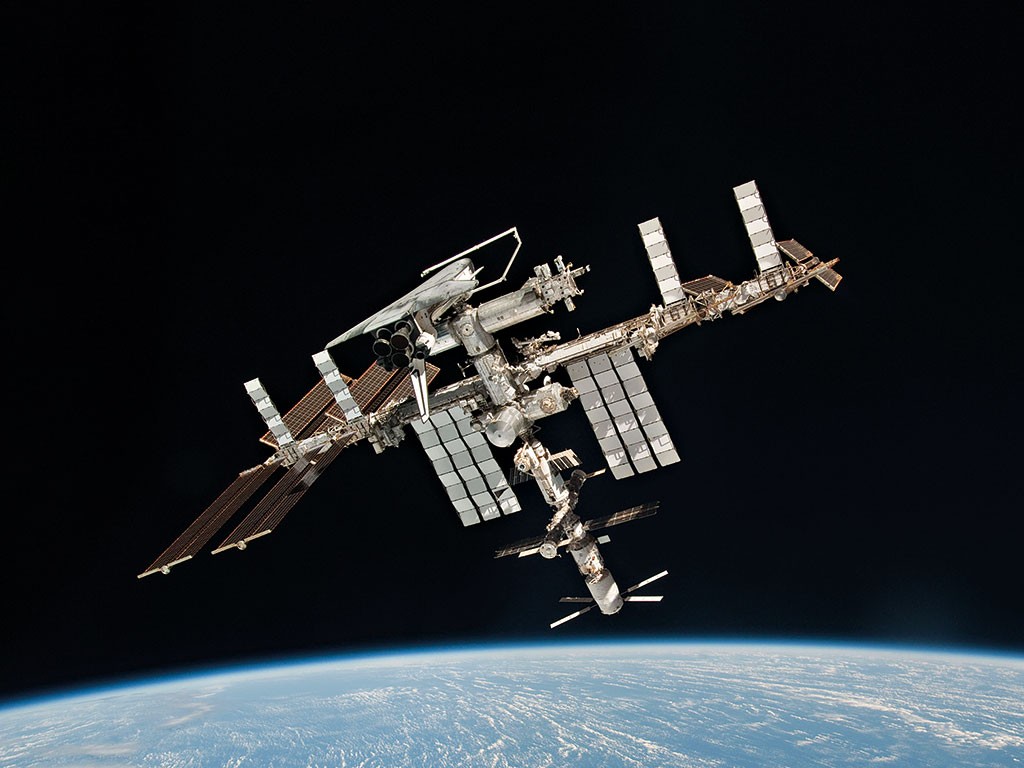Making waves in the debate around artificial reefs
Artificial reefs are a way of protecting nature that can, if not planned carefully, damage it. They are a crude unbalancing of marine biology that attracts thousands of tourists. They are, in short, a bit controversial

Artificial reefs are nothing new, argues Aaran Fronda, and essential if we are to protect the natural environment. But Laura French thinks they only encourage mankind to carry on producing, consuming and diving at excessive levels

One of the regular arguments against any artificial structure – reefs or otherwise – is that it is not ‘natural’. But anyone that uses this line of reasoning to try and denounce the use or efficacy of artificial reefs is simply unwilling or unable to face facts. The damage we have done to our oceans is vast, and nature alone cannot reverse what man has done – at least not while we still exist on this planet.
Man-made reefs not only act as bastions for marine life, but also help drive fishermen and divers away from natural reefs
Man-made reefs have many uses and, though they may appear to be something of a relatively new invention, the reality is they have been around for centuries. In fact, the Japanese used them as far back as the 17th century as a tool for improving fish stocks, while the US, Australia and New Zealand have sunk many ships to use as makeshift diving attractions in bids to tempt tourists to sample their shores. But, most importantly, artificial reefs have helped support nearby natural reefs, which provide a home for over 25 percent of all marine life on our planet.
Due to years of pollution, over fishing and a host of other harmful human practices, over 350 million acres of natural coral reef has been destroyed. Man-made reefs not only act as bastions for the marine life that has lost its natural habitat, but also help drive fishermen and divers away from natural reefs, offering them a moment’s reprieve from man’s incessant activity.
Artificial reefs provide many benefits, and not just in helping to protect the natural environment and the ecosystems on which the fate of future generations depend. In Plymouth, England, sinking the HMS Scylla, an old Leander-class frigate of the Royal Navy, and allowing nature to take its course has helped revive part of the city’s economy, bringing in more than £1.1m each year from the local dive industry. “In real terms”, says Neville Copperthwaite, a marine consultant and project coordinator of Weymouth and Portland Wreck to Reef, “it means people get to keep their jobs and new ones are created, enabling coastal communities to stay together and thrive.”
Man-made reefs embody the new paradigm for environmental sustainability, which sees social and economic development as inextricably linked to environmental protection.
That is consistent with the UN World Commission on Environment and Development, which defined sustainability as “development that meets the needs of the present without compromising the ability of future generations to meet their own needs”. The second of the two key points it highlighted within that definition (the first being the needs of the world’s poor) was that the environment’s ability to meet present and future needs should not be compromised.
In an ideal world, there would be no need for artificial reefs, but that is not the world we live in. This, sadly, is the state of modern conservationism. The only way to go down the ‘natural’ route would be, as some people suggest, to simply stop importing oil and halting the use of fossil fuels altogether, but that would have a catastrophic impact on our societies. Not to mention create a reality that many people would find themselves uncomfortable in accepting. If people really want to live in a world full of iPhones, fast cars and holidays to far-off lands, then fossil fuels are here to stay. And, if people are serious about ensuring biodiversity in our planet’s oceans, then artificial reefs are too.

Whoever came up with the idea of tossing cars, tyres and potentially pollutant-riddled ships into the ocean with the aim of creating ‘artificial reefs’ clearly liked the idea of control. The ocean is one of the only natural spaces left on the planet. Sinking 2,500 New York subway cars into it (as has been the case so far under the Artificial Reef Project run by the tourism boards of the US’ East Coast states) means slapping the seas with the big almighty hand of humankind and damaging yet another part of the Earth.
Artificial reefs can attract invasive species, upsetting the natural balance
Yes, artificial reef makers set out with all good, environmentally motivated intentions. But artificial reefs can cause harm. If they are not planned and built carefully, they will disrupt natural habitats and displace the very fish they are supposedly trying to save.
Construction and deployment of such reefs can create debris, pollution and accidental damage, and the materials used can contain toxic materials that give off harmful pollutants. Regardless of how much care is taken in testing, cleaning and stripping artificial reefs, it’s impossible to predict exactly what effect they’ll have on surrounding ecosystems 10 or 20 years down the line.
In the 1970s, two million old tyres were thrown into Florida’s oceans to expand the artificial Osborne Reef. They failed to attract sea life as intended, broke apart from one another and ended up floating through the sea, leaving destruction in their wake. The US military didn’t set about cleaning up the remains of the disaster until 2007.
In 2000, an artificial surfing reef was sunk off the coast of El Segundo, near Los Angeles, with the aim of creating an alternative spot for budding surfers; it didn’t work and was removed two years earlier than planned out of environmental concerns.
As you can see, artificial reefs aren’t always as robust as natural ones. Powerful storms can sweep them away to unintended regions, causing damage to natural reefs.
According to US environmental advocacy group Ocean Conservancy, artificial reefs can also cause an unnaturally high concentration of marine life, exposing organisms to overfishing. And they can attract invasive species, upsetting the natural balance, according to a report by the Norwegian University of Science and Technology. Unlike natural reefs, they’re also frequently left off the map, meaning fishing vessels and other ships can sail over and destroy them without ever knowing it.
Benefits to diving tourism and economies are often cited as reasons to support artificial reefs; in Florida they’re meant to divert divers away from natural ones. But they can also be self-defeating by encouraging more visitors and divers to come, causing more damage. That might be good for the local economy in the short term, but it’s only a matter of time before people start to seek out less popular, more natural and as yet undamaged alternatives as a result of excessive tourism around the artificial attractions.
What artificial reefs do is suggest it is OK to carry on producing, consuming and diving at ridiculously excessive levels, because there’s an apparent solution lying under that inviting azure sea. But disrupting natural habitats, releasing toxic pollutants and filling up the Earth’s only remaining untouched spaces seems a hefty price to pay for the sake of appeasing the guilty consciences of our over-consuming selves.













